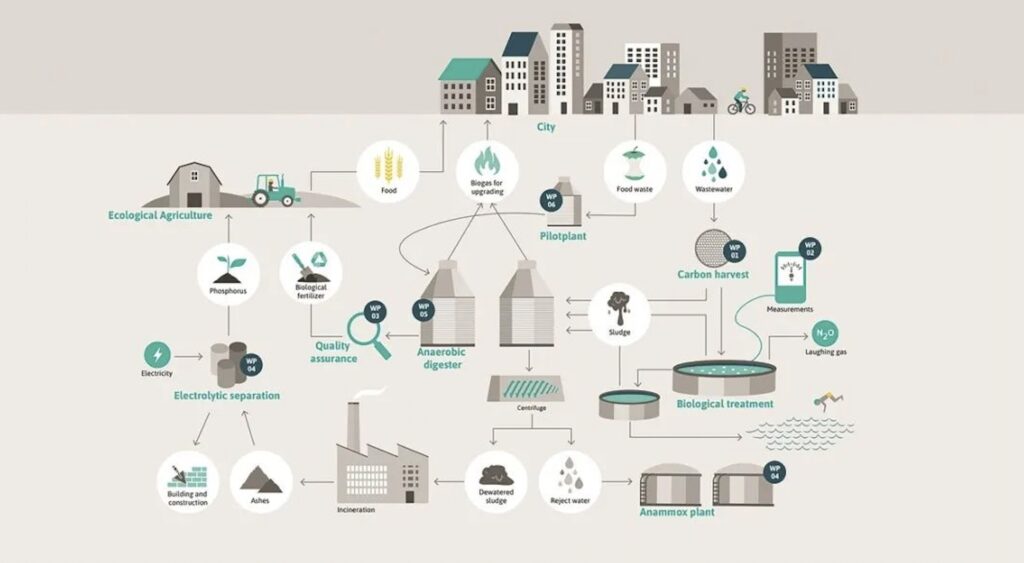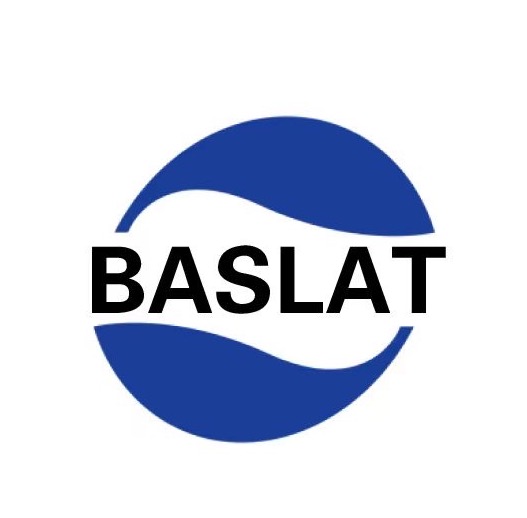
Water experts will be heading to Copenhagen for the IWA World Water Congress & Exhibition on 11-15 September. Registration is now open. To highlight some of the latest developments in sustainable wastewater treatment in the area, Miriam Feilberg hears from Dines Thornberg, head of R&D at BIOFOS.水务专家将于9月11-15日前往哥本哈根参加世界水协会世界水务大会和展览会。现已开始登记。为了突出该地区在可持续废水处理方面的一些最新进展,Miriam Feilberg听取了BIOFOS研发主管Dines Thornberg的采访
BIOFOS is responsible for the treatment of wastewater from 15 municipalities in the greater Copenhagen area. With a goal of delivering climate positive and resource efficient wastewater treatment to the city, the company is engaging in a programme to transform its existing treatment systems.
How did you get started on the road to delivering sustainable, resource-conscious wastewater treatment?
Dines Thornberg: We see our activities as an element within the circular economy and we realised that we could contribute on several issues. We can recover energy, reduce GHG emissions (not least nitrous oxide), recover phosphorus, and produce organic fertilizer. To strengthen our activities within this area of development, we started a project called VARGA. The aim of the project was to transform the existing wastewater treatment plant at Avedøre, south of Copenhagen, into a water resource recovery facility (WRRF).我们认为我们的活动是循环经济中的一个元素,我们意识到我们可以在几个问题上做出贡献。我们可以回收能源,减少温室气体排放(尤其是一氧化二氮),回收磷,生产有机肥料。为了加强我们在这一开发领域的活动,我们启动了一个名为VARGA的项目。该项目旨在将哥本哈根南部Avedøre现有的污水处理厂改造为水资源回收设施(WRRF)。
DT: From the beginning the push-factors were coming from our strategy and from dedicated employees. It is our vision to promote the green transition and circular economy, through ambitious objectives for the environment, sustainability, and climate neutrality. This is closely related to the implementation of the Sustainable Development Goals, which is a core focus for our company. We investigated our operations and realised that we could do better in terms of climate and sustainability.从一开始,推动因素就来自我们的战略和敬业的员工。通过实现环境、可持续性和气候中性的宏伟目标,促进绿色转型和循环经济是我们的愿景。这与可持续发展目标的实施密切相关,这是我们公司的核心重点。我们调查了我们的业务,意识到我们可以在气候和可持续性方面做得更好。
What were the challenges of this project?
DT: We have been producing energy for some years, but we wanted to be able to produce more energy and to become climate positive. We also realized that nitrous oxide is probably one of our key issues related to greenhouse gas emissions. We needed to measure and reduce our emissions, but only focusing on nitrous oxide would have been too narrow, we also wanted to look into carbon harvesting and phosphorus recovery. One of our digesters had some excess capacity, which could allow us to produce more biogas by taking in some organic household waste. We designed the VARGA project as a package looking at several opportunities and new technologies to transfer the existing plant into a resource recovery plant.
What have you learnt from this project that would be relevant in other countries?
DT: The process of transferring an existing plant into a water resource recovery facility is important. We have demonstrated that this is possible. This is important because there are many wastewater treatment plants like Avedøre all over the world. Just looking at Europe, there are 250 existing wastewater treatment plants like Avedøre.将现有工厂转换为水资源回收设施的过程非常重要。我们已经证明了这是可能的。这很重要,因为世界上有许多像Avedøre这样的污水处理厂。仅看欧洲,就有250家像Avedøre这样的污水处理厂。
The existing plants were designed to deliver a certain treatment quality without looking at energy consumption, circularity, or carbon emissions. We have learnt that it is possible to transform a wastewater treatment plant like Avedøre to the new demands without lowering treatment quality. Our experience is that we must develop a strategy for systematic transformation of processes and technologies to secure this process. We have worked with a combination of existing technologies in new applications, alongside the successive introduction of new technologies; by doing so, we have secured a transformation within economic boundaries, providing secure treatment.现有的工厂被设计为在不考虑能源消耗、循环或碳排放的情况下提供一定的处理质量。我们了解到,在不降低处理质量的情况下,改造像Avedøre这样的污水处理厂以满足新的需求是有可能的。我们的经验是,我们必须制定一项有计划地改造工艺和技术的战略,以确保这一工艺.我们在新的应用中结合了现有的技术,同时不断引入新技术;通过这样做,我们在经济范围内实现了转型,提供了安全的处理。
What are the project’s key achievements?
DT: We have made the most progress within three areas: energy, nitrous oxide, and phosphorus recovery. We have not yet finished all of the activities planned for the project, but we are working well, and will have very interesting demonstration sites to present when the IWA World Water Congress and Exhibition comes to Copenhagen in September 2022.
We have also learned during the process that we probably need to concentrate more on climate positivity and less on energy production, as energy becomes greener in the future. But the energy from wastewater can still serve as part of the energy mix. •
Energy recovery – carbon harvesting
能量回收-碳储存
BIOFOS is working with dynamic control of the plant to improve energy recovery by using organic household waste in the process and harvesting carbon. The pilot project has demonstrated that it is possible to produce more biogas from household waste and, as a spin-off, it has been possible to produce proteins that can be used for animal feed. The digestate from the food waste process can even be used as organic fertiliser. A main element of VARGA is the introduction of a pre-filter after the sand trap and before aeration. A pilot test has shown that it is possible to recover 20-30% more organic matter from wastewater, and to make it drier. The next steps in the process are to see if this drier sludge can produce more energy and provide more efficient use of the digesters. The knowledge gained from this project is particularly relevant for plants that are not yet carrying out preclarification. In this instance, the new filters will lower energy consumption significantly. The experiments and knowledge gained through this project will also be important to future water resource recovery facilities that may be more membrane based.
BIOFOS正在与工厂的动态控制合作,通过在过程中使用有机家庭垃圾和收集碳来提高能源回收。该试点项目已经证明,从生活垃圾中生产更多沼气是可能的,作为副产品,还可能生产用于动物饲料的蛋白质。食物垃圾处理过程中的残渣甚至可以用作有机肥料。食物垃圾处理过程中的残渣甚至可以用作有机肥料。VARGA的一个主要元素是在捕砂器之后和曝气之前引入预过滤器。一项中试表明,从废水中多回收20-30%的有机物是可能的,并使其更干燥。这个过程的下一步是看看这种干燥的污泥是否能产生更多的能量,并更有效地利用消化器。从这个项目中获得的知识对那些尚未进行预先澄清的工厂尤其重要。在这种情况下,新的过滤器将大大降低能耗。通过这个项目获得的实验和知识也将对未来可能更基于膜的水资源回收设施具有重要意义。
Nitrous oxide from wastewater treatment
Nitrous oxide is a greenhouse gas that is 298 times as potent as carbon dioxide and is among the most significant emissions from wastewater treatment. The Danish water sector aims to become 100% energy and carbon neutral by 2030 and, therefore, needs to manage nitrous oxide emissions, along with methane and carbon dioxide.一氧化二氮是一种温室气体,强度是二氧化碳的298倍,是废水处理中最重要的排放之一。丹麦水务部门的目标是到2030年实现100%的能源和碳中和,因此需要管理一氧化二氮、甲烷和二氧化碳的排放。
For a company such as BIOFOS, emissions of nitrous oxide may be half of its total greenhouse gas emissions, but these can’t be tackled until the extent of the problem is established. BIOFOS has been measuring emissions with different technologies and has, of now, three years of continuous measurement. One of the lessons learned is that there is huge seasonal variation, with large emissions from March to August. It may be possible to control emissions with different processes related to the dosage of carbon, amount of sludge and the transformation of bacteria. There may be a microbiological cause for these fluctuations, which makes it relevant to also look at DNA footprints related to the emissions.
对于像BIOFOS这样的公司来说,一氧化二氮的排放可能占其温室气体排放总量的一半,但在问题的严重程度确定之前,这些都无法解决。BIOFOS一直在用不同的技术测量排放,到目前为止,已经连续测量了三年。其中一个教训是,季节性变化很大,3月到8月的排放量很大。通过与碳用量、污泥量和细菌转化有关的不同工艺来控制排放是可能的。这些波动可能有微生物原因,这使得研究与排放有关的DNA足迹也变得相关。
Phosphorus recovery at Avedøre facility
Phosphorus is a scarce resource, but much needed in agriculture. In the Danish water sector, the goal is to recover phosphorus from wastewater and many projects for this are in development. BIOFOS is involved in two, testing and comparing the efficiency of different technologies. Results will be shared with IWA Congress participants visiting the plant in 2022.
磷是一种稀缺资源,但在农业生产中非常重要。在丹麦的水务部门,目标是从废水中回收磷,许多相关项目正在开发中。BIOFOS涉及两个方面,测试和比较不同技术的效率。结果将于2022年与参观该工厂的IWA大会参与者分享。
Tests are taking place to recover phosphorus using electricity and membrane technology. This does not require the use of chemicals and, by using green electricity, offers the possibility of chemical- and carbon-free recovery of phosphorus. The target is to be able to recover more than 80% of phosphorous.目前正在进行利用电和膜技术回收磷的试验。这不需要使用化学物质,通过使用绿色电力,提供了无化学和无碳回收磷的可能性。目标是能够回收80%以上的磷。
Another project is using easy-mining technology, where the ashes are taken from incinerated sludge, hydrochloric acid added, and phosphorus extracted by using calcium. This produces very clean phosphorus as a powder that can even be used in animal feed.另一个项目是利用”易采矿”技术,即从焚烧的污泥中提取灰烬,加入盐酸,再用钙提取磷。这会产生非常干净的磷粉末,甚至可以用于动物饲料。
See wastewater and resource recovery in action during IWA Congress
BIOFOS believes the ‘future treatment plant’ is a water resource recovery facility. Visit the living lab, the Avedøre Wastewater Treatment Plant, where the focus is on sustainable circular economy. If you come to Copenhagen for the IWA World Water Congress & Exhibition on 11-15 September, there is a chance to join a guided tour to see and hear about:
- Recovery of phosphorous from sludge ashes
- Carbon harvesting by prefiltration to increase biogas production and reduce energy consumption
- The Biogas Park, where biogas is upgraded to bio-natural gas and carbon dioxide is methanised for use by the public grid
- Nitrous oxide minimisation by online control and the test facility for treatment of hazardous substances in wastewater
See: www.worldwatercongress.org
Sustainable Development Goals – a beacon for activities at BIOFOS
BIOFOS decided to prioritise seven out of the 17 Sustainable Development Goals (SDGs) in its strategy. The company has selected the goals that are aligned with its strengths and where it believes it can make the most difference, locally, regionally and globally. The SDGs are not used to set quantitative targets, but to choose areas of action and to prioritise resources. In this way, employees feel confident that their daily activities are contributing to global sustainability. For instance, recovery of phosphorus contributes directly to SDG12: ‘Responsible consumption and production’, and energy recovery activities contribute to SDG 7: ‘Affordable and clean energy’. The company has operational targets on treatment quality, but carrying out activities based on the SDGs ensures it also focuses on climate targets. BIOFOS has prioritised the following SDGs:
6. Clean water and sanitation
7. Affordable and clean energy
11. Sustainable cities and communities
12. Responsible consumption and production
13. Climate action
14. Life below water
17. Partnerships for the goals
Meet BIOFOS
BIOFOS is Denmark’s largest wastewater utility, treating the wastewater of 1.2 million people living in the Greater Copenhagen Area at its three treatment plants: Lynetten, Avedøre and Damhusåen. The wastewater is treated for organic and inorganic solids together with nitrogen and phosphorus. The treated wastewater from Lynetten and Damhusåen is discharged via two 1.5 km-long pipes leading into the sea. The treated wastewater from Avedøre is discharged into Køge Bay via two 1.1 km-long pipes. BIOFOS has a positive energy balance, at 177%. The company is owned directly or indirectly by 15 municipalities in the capital area of Copenhagen, treating wastewater from all 15 owners.
Miriam Feilberg is climate change manager at DANVA



